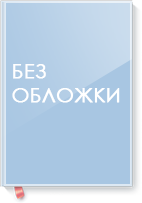База данных: ЭБС EBSCO eBook
Страница 1, Результатов: 1
Отмеченные записи: 0
1.

Подробнее
S 99
Szulakowska, Urszula,.
Renaissance and Baroque art and culture in the Eastern Polish-Lithuanian Commonwealth (1506-1696) / / by Urszula Szulakowska. - Newcastle upon Tyne : : Cambridge Scholars Publishing,, 2018. - 1 online resource (xv, 443 pages) : : il, карты. - Includes bibliographical references and index. - URL: https://library.dvfu.ru/lib/document/SK_ELIB/08805E1E-3B06-4196-8FDC-7F9716C018DC . - ISBN 9781527527430 (electronic bk.). - ISBN 1527527433 (electronic bk.)
Description based on online resource; title from PDF title page (EBSCO, viewed February 5, 2019).
~РУБ DDC 720.94793
Рубрики: Architecture, Renaissance--Lithuania.
Art, Renaissance--Lithuania.
Architecture, Baroque--Lithuania.
Art, Baroque--Lithuania.
Architecture, Renaissance--Belarus.
Art, Renaissance--Belarus.
Architecture, Baroque--Belarus.
Art, Baroque--Belarus.
Architecture, Baroque.
Architecture, Renaissance.
Art, Baroque.
Art, Renaissance.
ARCHITECTURE / Adaptive Reuse & Renovation
ARCHITECTURE / Buildings / Landmarks & Monuments
ARCHITECTURE / Professional Practice
ARCHITECTURE / Reference
Belarus.
Lithuania.
Аннотация: This monograph serves as an introduction to the art, architecture and literary culture of the Eastern Polish-Lithuanian Commonwealth in the 16th and 17th centuries. The geographical area under discussion comprises the regions of contemporary Lithuania, western Belarus and western Ukraine. The introduction of the Renaissance and Baroque classical revival into these lands is considered here within the political context of nationalistic and religious loyalties, as well as economic status and class. The central discussion focuses on the issue of national identity and religious loyalty in the inter-relation between the Byzantine inheritance of the Lithuanian and Ruthenian populace and the Polonizing Catholic influences entering from the west. A close study is made of the royal, noble and urban patronage of the richly-diverse visual and literary modes developed in these two centuries, as well as examining the cultural achievements of the many national groups in the Eastern Commonwealth, including Ruthenians, Lithuanians, Poles, Armenians, Jews, Karaite and Islamic Tatars. A major issue explored here is the problem of restoring and conserving the vast amount of devastated material culture in these regions, particularly in Belarus.
S 99
Szulakowska, Urszula,.
Renaissance and Baroque art and culture in the Eastern Polish-Lithuanian Commonwealth (1506-1696) / / by Urszula Szulakowska. - Newcastle upon Tyne : : Cambridge Scholars Publishing,, 2018. - 1 online resource (xv, 443 pages) : : il, карты. - Includes bibliographical references and index. - URL: https://library.dvfu.ru/lib/document/SK_ELIB/08805E1E-3B06-4196-8FDC-7F9716C018DC . - ISBN 9781527527430 (electronic bk.). - ISBN 1527527433 (electronic bk.)
Description based on online resource; title from PDF title page (EBSCO, viewed February 5, 2019).
Рубрики: Architecture, Renaissance--Lithuania.
Art, Renaissance--Lithuania.
Architecture, Baroque--Lithuania.
Art, Baroque--Lithuania.
Architecture, Renaissance--Belarus.
Art, Renaissance--Belarus.
Architecture, Baroque--Belarus.
Art, Baroque--Belarus.
Architecture, Baroque.
Architecture, Renaissance.
Art, Baroque.
Art, Renaissance.
ARCHITECTURE / Adaptive Reuse & Renovation
ARCHITECTURE / Buildings / Landmarks & Monuments
ARCHITECTURE / Professional Practice
ARCHITECTURE / Reference
Belarus.
Lithuania.
Аннотация: This monograph serves as an introduction to the art, architecture and literary culture of the Eastern Polish-Lithuanian Commonwealth in the 16th and 17th centuries. The geographical area under discussion comprises the regions of contemporary Lithuania, western Belarus and western Ukraine. The introduction of the Renaissance and Baroque classical revival into these lands is considered here within the political context of nationalistic and religious loyalties, as well as economic status and class. The central discussion focuses on the issue of national identity and religious loyalty in the inter-relation between the Byzantine inheritance of the Lithuanian and Ruthenian populace and the Polonizing Catholic influences entering from the west. A close study is made of the royal, noble and urban patronage of the richly-diverse visual and literary modes developed in these two centuries, as well as examining the cultural achievements of the many national groups in the Eastern Commonwealth, including Ruthenians, Lithuanians, Poles, Armenians, Jews, Karaite and Islamic Tatars. A major issue explored here is the problem of restoring and conserving the vast amount of devastated material culture in these regions, particularly in Belarus.
Страница 1, Результатов: 1
